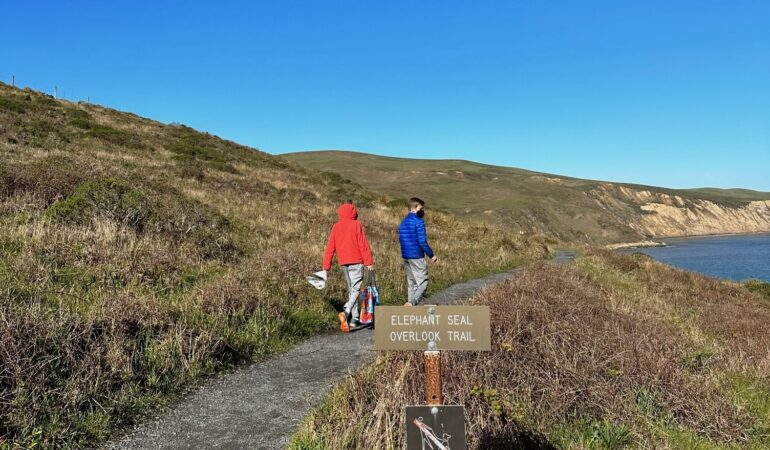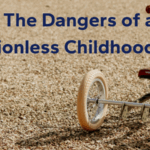Early childhood years are all about curiosity. Equipped with an absorbent mind, children spend their days filled with wonder and questions. For a lot of us, though, something happens to our questioning minds as we grow older and spend our days in school. According to this 2020 piece in The Guardian:
…research from Susan Engel, author of The Hungry Mind and a leading international authority on curiosity in children, finds questioning drops like a stone once children start school. When her team logged classroom questions, she found the youngest children in an American suburban elementary school asked between two and five questions in a two-hour period. Even worse, as they got older the children gave up asking altogether. There were two-hour stretches in fifth grade (year 6) where 10 and 11-year-olds failed to ask their teacher a single question.
As Montessori Guides, we prepare environments that inspire questions, curiosity, and healthy risk-taking. The projects that grow from this environment almost always transcend artificially siloed academic disciplines and create collaborations in which each student’s individual talents and areas of growth can bloom.
Case in point: Two boys, a beach full of elephant seals, and Montessori education in action.
This winter, the Upper Elementary Guides created opportunities for students in both of the Upper Elementary classes to work together to expand social and academic options for our students.
To get us started, Eluña Antle, an Elementary Guide, offered a lesson to four children on the elephant seal as an example of animals found in our local environments. Children of all ages tend to gravitate towards animals, and, in the Upper Elementary, animals often provide entry points into the study of biology, ecology, and more.
Two of those children – Otis and Walker – found themselves deeply intrigued by what they learned about elephant seals so opted to continue the lesson with follow-up work. They researched the biology, life cycle, gestation, and natural habitats of elephant seals. They followed the general Montessori research questions:
- What does the animal eat?
- Where does it live in the world and in what kind of habitat?
- Who preys on it?
- How does it reproduce?
- What are its forms of movement?
In Montessori education, powerful teaching and learning are informed by understanding the natural tendencies of children and then creating the right conditions to match their developmental needs. For research, we’ve found that this skill still develops more powerfully when children rely on more hands-on, text-based methods of research instead of relying right away on the internet. The boys found and read research books on elephant seals and wrote a detailed paper that answered the key Montessori research questions noted above.
In the midst of their research, the boys and I began theorizing about the fascinating trunk formation on the heads of elephant seals. We learned that the odd apparatus is more dominant in males than in females, and we wondered what the evolutionary value might be.
Asking these questions ignited the flames of learning even higher. By creating the space and opportunity for the children to speculate and then seek answers, we allow children to internalize the practices of scientific inquiry and experience the joys of deep learning. And, off they went to conduct more research.
Another critical part of our approach in Montessori elementary education is making learning visible, which helps them move into abstract thinking. I asked the boys if they wanted to paint their visual representation, and they both were excited about it. I asked what kind of painting they might want to do, and both shared that they hadn’t worked in watercolor since Primary and were excited to return to it and advance their skills.
And so I gave them a lesson on watercolor painting. They used a more sophisticated watercolor paint set than young children use, which allowed them to fine-tune the dilution of color. I introduced the idea that a painting can be completed in one sitting or it can be done in drafts just like with their writing.
They painted from images that they had found in books. While doing this work with them, we talked again about the elephant seals on the coast at Point Reyes National Seashore…
Getting a Going Out Going
Going Outs are not field trips. The key differences are that they are highly driven by student interests, thus are generally small group trips out into the surrounding area to pursue information that cannot be found on campus. The structure of a Going Out itself cultivates tangible skills that support independence. In The Four Planes of Education, Dr. Montessori shared, “We have provided schools and materials; they are not enough; [the child] requires to explore the physical world and society.”

Going Outs are extensions of the active imagination, the functioning intellect, and the reasoning mind. These are dynamic learning experiences that take place in an external environment beyond the classroom and the school’s campus.
In a Going Out, the children handle all of the logistics. They ask and answer questions such as:
- Where are we going?
- How are we going to get there?
- Which adult chaperone should we invite?
- When is there an appropriate opening on the calendar?
- How do we schedule the school van?
- How much money do we need?
- How do we get to where we’re headed?
- In the Upper Elementary, students use printed maps to chart their routes.
The adult taking children on a Going Out is there to keep them safe, not rescue them from the natural consequences of their planning. The children direct the experience and adapt. If a child maps the route incorrectly, they pull out the map again and find their way back. If they forget the money at school, they get back in the van, return to class, and start the whole plan over again.
“The foot is noble. To walk is noble. Thanks to the feet, the child who already walks can expect of the outdoors certain answers to his secret questions.”
Dr. Montessori in From Childhood to Adolescence
For the trip to Point Reyes, Otis and Walker reached out to Anna Mitchell, a Lower Elementary Guide, who frequently takes her classes to visit the elephant seals this time of year. After she mentioned the best place to see the seals, they pulled out the physical maps for directions, scheduled their time with a chaperone, and reserved the van.
Elementary faculty member Ashley Anderson had time available and was the adult who got to “Go Out” with them for the day. They painted en plein air – meaning they brought watercolor supplies so they could paint out in the environment with the elephant seals right in front of them. They spent the day observing, painting, and hypothesizing about what they were seeing in front of them.
The Beauty of Following Their Lead
If you step back, you can see that, in this moment, these two boys demonstrated so many of the skills and characteristics we hope young adolescents possess: curiosity, collaboration, independence, and responsibility. They also learned scientific concepts and integrated art and writing seamlessly into their investigation of biology and evolution.
Specifically, these students learned deeply about:
- Dominance hierarchies in nature
- Life cycles and interdependence in ecosystems
- Research and writing techniques
- Watercolor techniques
- Practical life skills, including mapping, planning, and coordinating with adults

Learning in this manner made an impact on these boys. “You’re actually in the world rather than learning from some book in a classroom,” Otis says. “You get to be in the story.”
Walker agrees. “It’s more effective this way because you’re experiencing first-hand instead of from a book that some multimillion-dollar company wrote to test you on it.”
True to the Montessori approach, these boys found themselves in a beautiful living experience with their senses alive to the wind whipping the sand and the sounds of these marvelous creatures echoing around them. The end result was born from a process that began with curiosity, proceeded down a natural path of inquiry and investigation, and invited them to take initiative and responsibility in a quest to learn and understand.
When I see this kind of exploration unfold in front of me, I can’t help but compare it to the kind of education I experienced where a teacher might have assigned me to read about migration patterns and gestational cycles in a textbook and then assessed me on what I could remember on test day.
Which kind of learning experience will endure? Which will inspire more curiosity? Which is more likely to keep the flame of scientific inquiry and artistic exploration alive?
I know my answers to these questions.

Denise has been guiding elementary students since 2011. She earned her AMI Elementary diploma from Milwaukee Montessori Institute and began her career in Switzerland in a bilingual Montessori 6-12-year-old classroom. In 2014, she transitioned to serve as the lead guide for a 6-9 Lower Elementary classroom at Childpeace Montessori in Portland, Oregon and joined Marin Montessori School in 2021. Denise finds her career so rewarding because children bring joy to the simplest things yet also embrace big, bold ideas and always help her see the world from different perspectives; her students keep Denise thinking, learning, and growing.






Nancy Keuffel - grandmother of Otis
This type of education is wonderful! It stands head and shoulders over the “read and repeat back” of my day. And, these boys will remember this trip forever. How clever to introduce art into the event.
Sam Shapiro
Thank you Denise for sparking the students’ interest, and cultivating that spark into a flame–they learned and experienced so much value, using and developing multiple senses and skills throughout!